There are many crafts that can be made with horse hair! You’ve probably heard of braided bracelets made with long hair from a horse’s tail. You might not know that the fur horses shed in spring can be cleaned, carded, and used for any fiber products!
In this article, you’ll learn all about fiber crafts using horse fiber, but first, let’s start with some basic facts about horse hair and fur as a fiber:
Horses have both Fur and Hair
I’m sometimes asked if horses have fur or hair. My standard reply, as an expert horse owner, breeder, and riding coach, is that horses have both fur and hair.
Horse Fur: Horse fur covers their face, chest, neck, belly, rump, and legs. Fur is shorter, denser, and specifically designed to provide insulation against wind, rain, cold, and even insects!
Horse Hair: Horse hair grows on the crest of the neck (mane), between the ears (forelock), and from the tailbone (tail). Horse hair is made up of long strands of keratine- much like human hair but coarser. These long, coarse hairs serve different purposes, like swatting away insects.
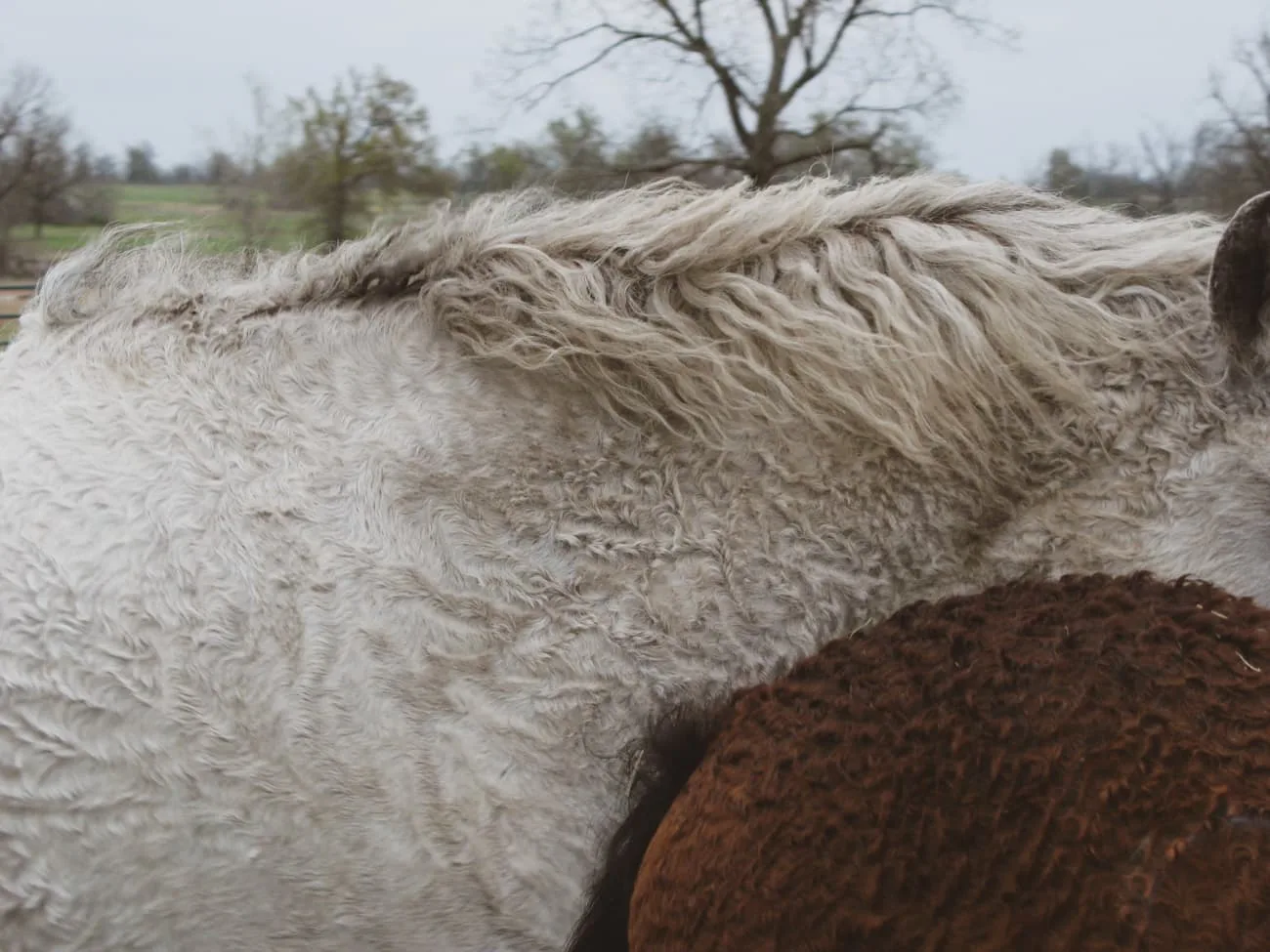
What’s the difference between horse fur and hair?
Fur and hair, although sometimes used interchangeably in everyday language, are very different. Fur tends to grow to a certain length, fur sheds out in the spring, and is denser. Hair, on the other hand, can grow much longer, doesn’t shed as regularly, and does more than just insulated. Here’s a table showing the difference:
| Fur | Hair | |
|---|---|---|
| Length | Grows to a set length and stops | Can grow much longer without a set limit |
| Shedding | Sheds regularly (e.g., seasonal changes) | Usually does not shed |
| Density | Dense, fine | Varies, can be fine or coarse |
| Purpose | Insulation against cold | For insect protection |
In summary, while the body of a horse is blanketed in fur, its mane and tail are made up of hair. Understanding the difference is a key starting point for deciding if you want to make horse hair crafts like braided handicrafts, or horse fur crafts like felt or yarn.
Using Horse Fur in Crafts
All horse fur can be used in fiber, but fur from our Curly Horses works even better. Curly Horses have many unique traits, most prominent is their unique curly coat.
Curly horse fur is both hypoallergenic and often of a very different texture than typical “straight” horse fur. Because of this unique fiber type, curly horse hair can be used for fiber arts and even felting- similar to wool or alpaca fiber. If you’ve confirmed that your horse is a curly horse, read on to learn more about collecting fiber from curly horses, cleaning collected fiber, and integrating this unique fiber into many projects!
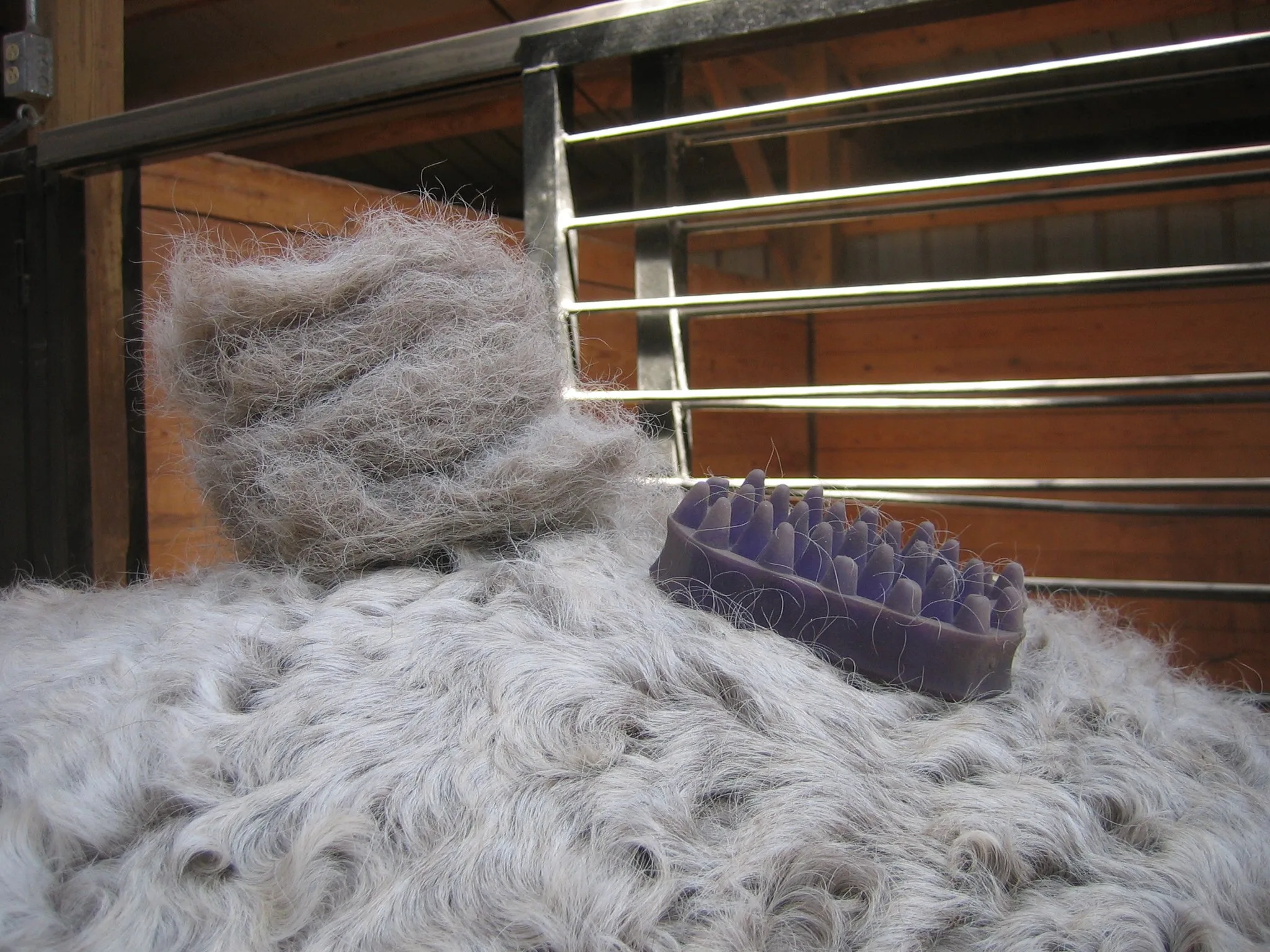
Comparing the photos above, it’s not hard to see why curly fur makes a better fiber for fiber arts than straight horse hair. Typical horse hair shafts are straight, coarse, and slick. Curly fur can be coarser or finer than typical horse hair, depending on the horse. Generally, it isn’t as slick and the curl helps it clump during shedding. When collected with a good shedding grooming tool, this trait makes it perfect for felting.
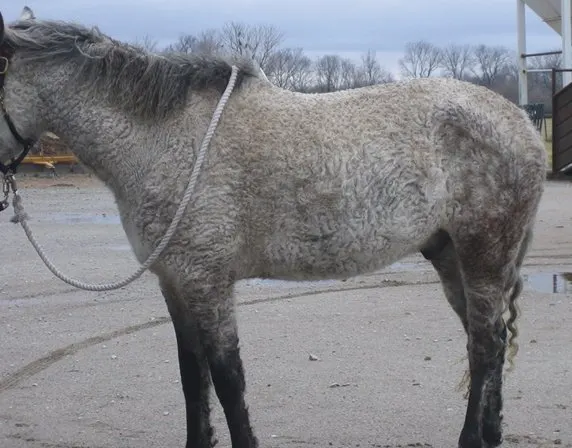

Collecting Curly Horse Hair Fiber
Before spinning or felting curly horse hair, you’ll have to collect it. This photo shows the fur collected from a Bashkir Curly in spring. Those super furry coats shed A LOT during the spring. The photo below shows how easily curly horse fur clumps and stores after grooming. Like wool, it forms together easily.
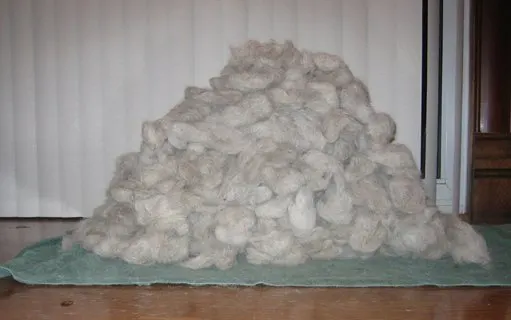
To collect the fur, use a good rubber curry comb with “nubs” or fingers to collect the fur. Currying with this type of comb will collect the fur into pancakes which can easily be knocked off into a waiting bag (I prefer fabric bags- or even old pillowcases- over plastic bags, in case any fur has residual moisture that needs to dry out). Do NOT let the fur fall and try to collect from the ground- the fur should be kept as clean as possible.
After Collecting: Cleaning the Fiber
In the past, we’ve cleaned our own fur and gone the route of sending it to fiber artists to have the vegetable matter picked out, washed, carded, blended with wool or alpaca fiber, formed into roving, then finally spun into a finished yarn that is exceptionally warm and soft.

DIY: How to Prepare Horse Hair Fiber for felting:
Brush horse and collect fiber
During spring grooming, collect long fibers shed from your horse’s body fur.
Remove visible debris
Spread the fiber out and pick out any visible pieces of debris or plant matter.
Wash
To clean, you can handwash or use a washing machine. Use WARM water, gentle soap, and wash the fiber by first tying or stitching it inside of a pillowcase or use a zippered lingerie bag with very, very fine mesh to wash. Do not overstuff the bag.
Dry
Washing will remove a large amount of dust and very fine debris from the fiber, and you may need to wash it twice. Once clean, spread thinly in a very well ventilated area and allow to dry completely (this may require several days)
Collect and Card
Normally, carding is a process that aligns long, straight fibers parallel to each other. For curly fur- which is naturally not straight and thus not able to align- carding is still useful as a final cleaning step where clumps are broken up and any remaining pieces of debris removed from the fiber. Fiber carding brushes can be expensive, but this dog grooming brush on Amazon works perfect as a tool for felting horse fiber.
Blend and Spin
Horse hair fiber must be blending with longer fibers, such as wool or alpaca fur, to create a sturdy yarn. After blending horse hair with another source, the fiber can be turned into roving and spun into yarn.
Estimated Cost: 10 USD
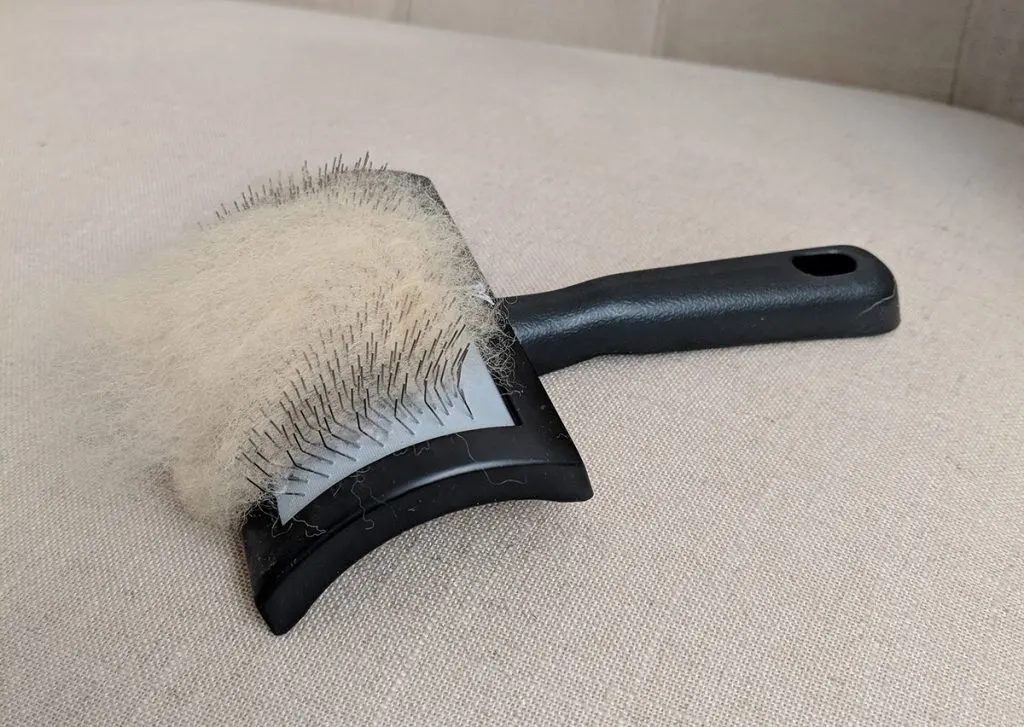
Felting with Bashkir Curly Fur
The photo below is of a square of felt made from 100% Bashkir Curly Fur. Like wool, curly horse fiber can be felted into a solid sheet. This piece is lightly felted- still retaining a very loose texture. Wool Felt is created through a combination of heat and agitation, for curly horse felting I add an additional step of ice-water baths, which cause curly fiber to curl more tightly- causing fibers to more fully interlock.
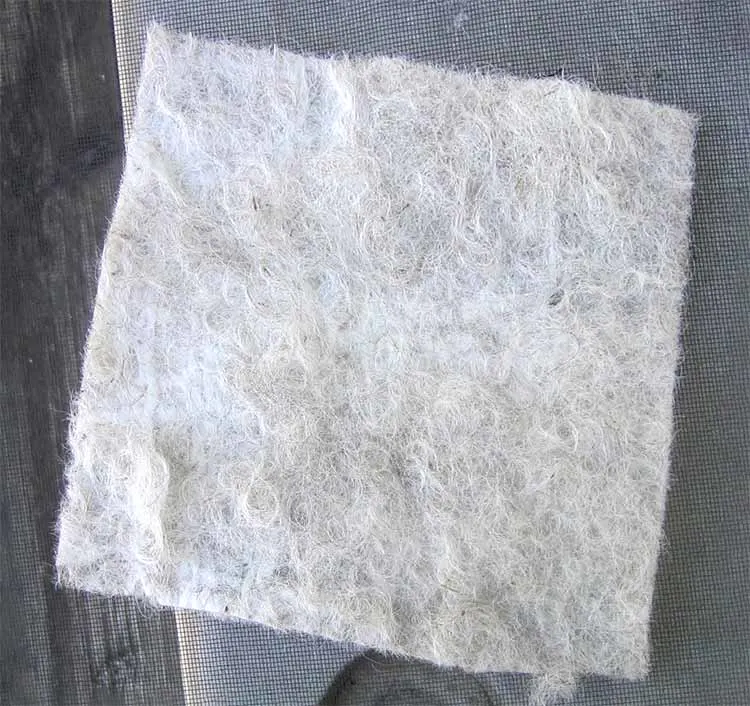
Curly horse fur felt is made with the same process used to make traditional felt- for which many tutorials exist so I won’t reinvent the wheel by outline the entire process. I will add a few tips for working specifically with curly horse fiber:
- Felting tutorials will call for very hot water. Between cycles of hot water, add cycles of ice-water to help curly fibers interlock.
- Making 100% curly horse help is labor intensive and requires many rounds of felting agitation. For most purposes a 50/50 blend with wool- or even felting directly on top of a sheet of wool or wool blend felt (binding the two fibers together) will create superior results more quickly. If you try this, be sure and “rough” the surface of your felt prior to adding curly fur by scraping your carding brush along the surface.
This felt flower magnet with button center was made from the fur of a Bashkir Curly collected during shedding season, felted into hard felt, then dyed, cut, and sewn together.
Fiber crafts – including crafts made with curly horse fiber yarn- make family friendly crafts for all ages. Children are enthralled by the process of turning a pile of fiber into a sheet of felt. Crafts using horse-hair blend yarn are perfect for nursing home crafts, especially for elderly people who have good memories of growing up on a horse farm.
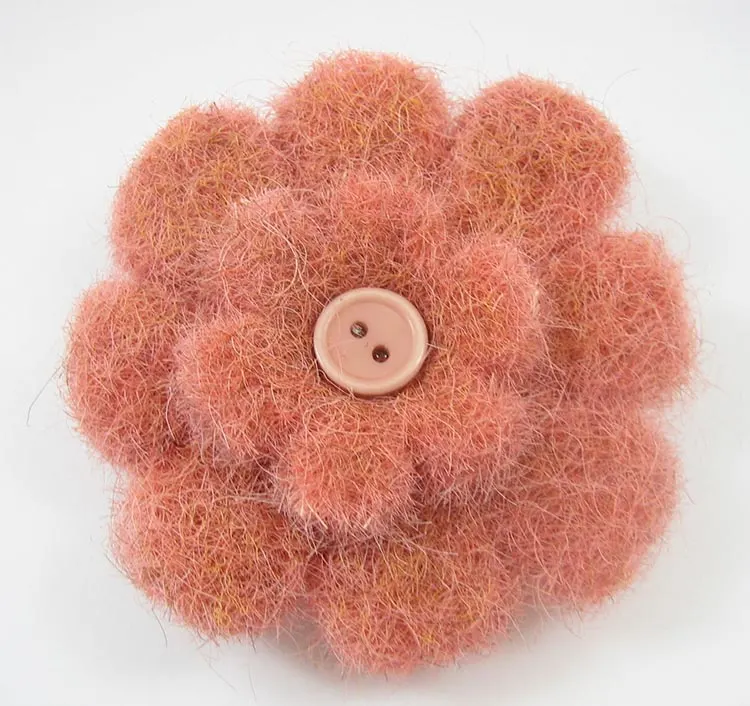
Curly Horse fur is warmer than traditional horse hair. In colder temperatures-curly coats actually become curlier in response to the cold. Some curly horse experts propose that this is one of the ways that curlies became a distinct breed from the Spanish Mustangs they were once a part of. Able to survive in harsher climates than horses with standard coats, the curly fur enabled them to self-isolate and breed. Horse hair from curly horses can- believe it or not- be cleaned, carded, and used in fiber arts like felting, spinning, and knitting.
Fiber Qualities of Curly Horse Hair
Before Yahoo groups disappeared into the ether (Archives of Yahoo groups were removed from Yahoo in January 2020) we did some research into the Curly Horse fur fiber discussions that had occurred on the platform years previous. Here’s what we learned:
Curly horses are rare among fiber-producing animals in that curly fiber has a “twist” to each hair, some other animals with fur that has this quality are rare Suri alpacas, and some heritage breeds of sheep and mohair goats. Most fiber animals produce fibers that curve in 2 dimensions. Curly horse fiber, however, has the standard two-dimensional wave plus an added twist. Curly fiber is formed a bit like a screw, it’s larger on nee end and smaller at the tip.
Curly horses with a less visible curl in their winter coat had a weaker twist when researchers enlarged and examined the fiber. An easy way to check your curly horse’s fur and the quality of the fiber they produce is to pluck 23 pieces of fur and place them flat on a piece of paper. When they spring back when your fingers are removed, does the fiber lay flat against the page, curving in two dimensions but remaining flat on the page, or do the fibers have a three-dimensional rise off the paper? If the fibers lift of the paper, it’s indicative of a twist in the fiber which should produce high-quality fiber for fiber crafts, spinning, and felting.
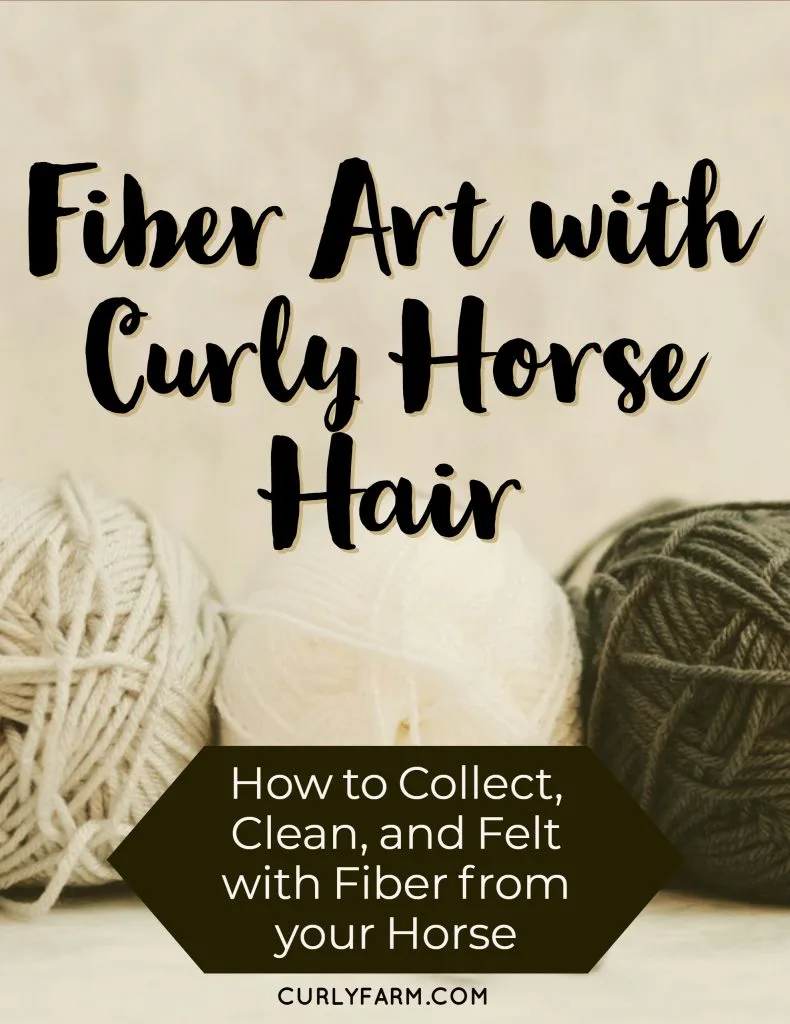

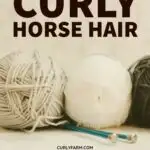
Ann
Saturday 25th of April 2020
Do you have any pictures of a curly after a brush/shed ?
Tatum
Saturday 25th of April 2020
Not specifically! They don't look much different before or after- spring shedding happens very slowly over a few weeks so it's hard to tell much difference from one brushing to the next!
Phyllis
Monday 10th of December 2018
Hello. I am looking for curly horse hair that has already been spun into skeins and perhaps learning how to spin myself. Can you tell me what purchase quantities and pricing is for the bulk hair?
Tatum
Thursday 13th of December 2018
Hi Phyllis, I don't know the answer to your question but I've posted your comment- hopefully another visitor will comment with a lead on fiber!